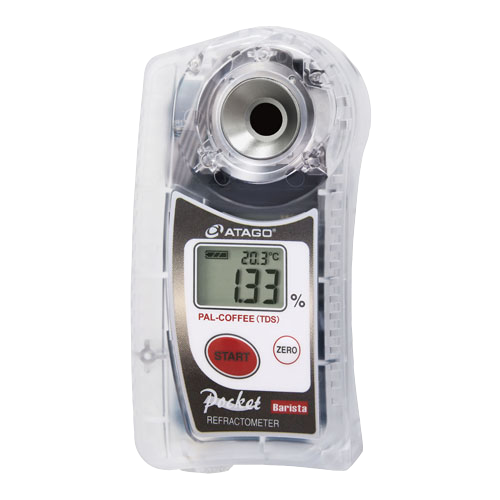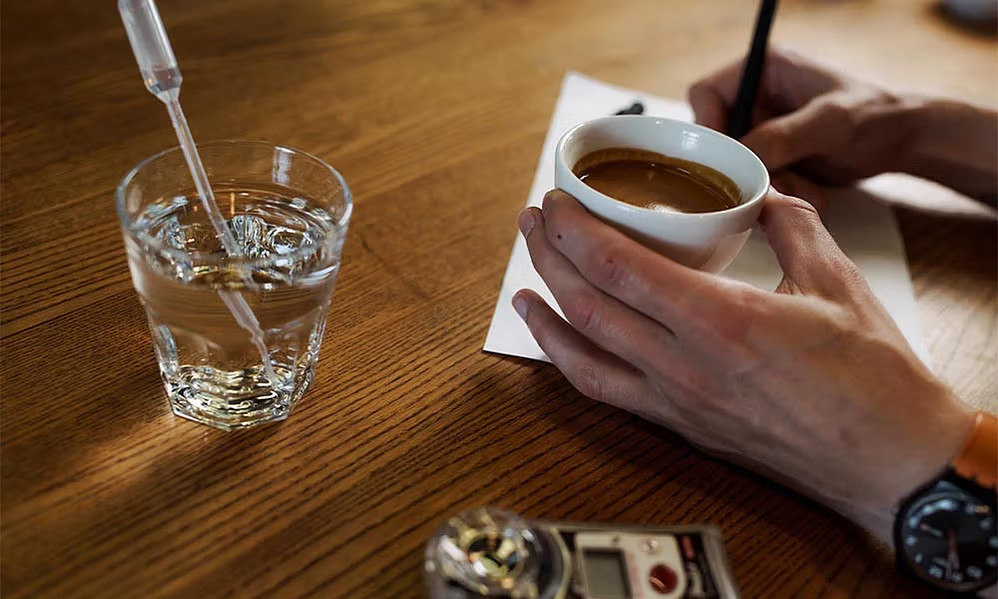
Refractometer Atago
digital


Among the tools increasingly adopted by professional baristas and discerning coffee lovers, the refractometer is nothing short of a revolution for anyone looking to take quality control of their coffee to the next level. In the world of specialty coffee, every detail matters: from the quality of the bean to the precision of the grind, from extraction time to the measurement of the brew in the cup. Whether you prefer decaf or you’re passionate about organic coffee , the refractometer is an essential instrument for properly assessing the quality of the extraction.
A refractometer is a precision instrument used to measure the refraction of light through a liquid. In the case of coffee, it allows you to calculate the Total Dissolved Solids (TDS) percentage in a drink—an essential indicator for evaluating extraction quality.
A good espresso, for instance, should have a TDS between 8% and 12%, whereas filtered brewing methods typically yield a TDS of around 1.2–1.5%. These values help the barista determine whether a coffee has been over-extracted, under-extracted, or is perfectly balanced.
The refractometer operates based on light refraction: an LED light passes through the coffee sample, and a sensor detects the refraction angle, which changes depending on the concentration of dissolved solids in the liquid. The measured value is displayed on the device’s screen as a TDS percentage.
To ensure an accurate reading, the coffee sample must be filtered (for example, using a 0.45-micron syringe filter) to remove any oily or solid residue. After filtering, simply place a few drops on the refractometer sensor and wait for the reading.

Using a refractometer comes with several benefits, particularly in settings where precision and consistency are critical—such as in specialty coffee shops or coffee analysis labs. Here are the main advantages:
At CaffèLab, you’ll find highly reliable models used throughout the professional coffee world. Among them:
The Atago Digital Refractometer: One of the most accurate and widely used models in the industry. Designed for analysing liquids with a low concentration of dissolved solids, it’s perfect for measuring filter coffee, tea, and other infusions. The Atago is water-resistant (IP65), features a rapid response time, and is easy to calibrate using distilled water.
The HM Digital Refractometer: More compact and budget-friendly, this model is ideal for those just starting to incorporate a refractometer into their workflow. It’s easy to use and delivers quick, accurate readings. Like the Atago, this model also requires filtered samples for correct measurements.
Both tools represent a smart investment for improving extraction quality and bringing your coffee to a level of excellence.
Using a refractometer in the coffee world is no longer a quirky lab-only practice, but rather an increasingly common standard for those seeking precision, repeatability, and control. Whether you’re a seasoned barista or a curious homebrewer, the refractometer allows you to better understand what’s happening during extraction—and to continuously improve your coffee.